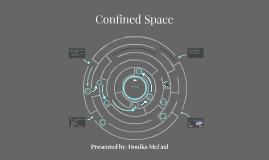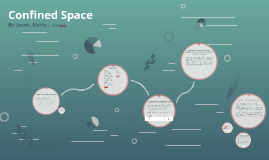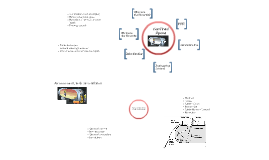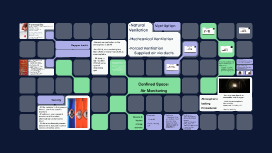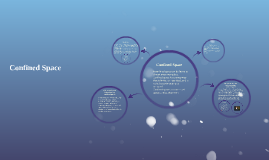Confined Space
Transcript: Not to be confused with “restricted space”, refers a “space from which the egress of a worker is restricted, limited, or impeded” Means a fully or partially enclosed space: a) That is not both designed and constructed for continuous human occupancy b) In which atmospheric hazards may occur because of its construction, location or contents or because of work that is done in it Is not primarily designed or intended for continuous human occupancy Can be below or above ground, found in almost any workplace Examples: Do I have a confined space in my workplace? Is the space fully or partially enclosed? Is the space not both designed and constructed for continuous human occupancy? Might an atmospheric hazard occur? and Nael Safety Precautions What are Confined Spaces? Tunnels Wells Manholes Cold storage Ship holds Subcellars Tanks By: Jason, Mario... What are the Hazards? Is working in a confined space dangerous? Vaults Open ditch Flues, chimneys, ovens or furnaces Pipes, sewers, ducts and similar structures Ditches and trenches may also be a confined space when access or egress is limited Aircraft wings, manure pits, storage bins, pump stations, digesters Culverts Silos Sources: Many workers are injured and killed each year while working; Estimated 60% of the fatalities have been among the would-be rescuers To effectively control risks associated with working; confined space hazard assessment and control program should be implemented for your workplace, make sure to review the specific regulations that apply to your workplace If the confined space cannot be made safe for the worker by taking precautions then workers should NOT enter the confined space until it is made safe to enter by additional means. All confined spaces should be considered hazardous unless a competent person has determined otherwise through a risk assessment. Offices, service rooms (such as mechanical rooms, elevator rooms), shops, walk in freezers and refrigerators, laboratories, flammable liquid storage and dispensing rooms, and rooms equipped with approved fire suppression systems This also includes trenches that are under construction and that are in compliance with the O. Reg. 213/91 (construction Projects) requirements (which cover access and egress, stability of the trench walls and adequate ventilation in the trench) Confined Space Vehicular and pedestrian traffic Shifting or collapse of material Barrier failure resulting in flood or release of re-flowing solid or liquid Visibility (e.g., smoke particle in air) Biological hazards: viruses, bacteria from fecal matter and sludge, fungi, or molds Examples of spaces that are both designed and constructed for continuous human occupancy Process-related hazards such as residual chemicals, release contents of a supply line Physical hazards: noise, heat/cold, radiation, vibration, electrical, and inadequate lighting Safety hazards: moving parts of equipment, structural hazards, engulfment, entanglement, slips, falls Vehicular and pedestrian traffic Questions to identify one Poor air quality: insufficient of oxygen for the worker to breathe Hazards from asphyxiants: Simple asphyxiants are gases which can become so concentrated that they displace oxygen in the air; nausea, vomiting, collapse, convulsions, coma and death can occur could result within minutes following exposure to a simple asphyxiant - include argon, nitrogen, or carbon monoxide Chemical exposures: skin or ingestion as well as inhalation Fire hazard: explosive/flammable atmosphere Has limited or restricted entrance or exit, that can complicate first aid, rescue, evacuation, or other emergency response activities Can represent a risk for the health and safety of anyone who enters, due to one or more of the following factors: 1. Its design, construction, location or atmosphere 2. The materials or substances in it 3. Work activities being carried out in it 4. Or mechanical, process and safety hazards present https://www.labour.gov.on.ca/english/hs/pubs/confined/cs_4.php https://www.ccohs.ca/oshanswers/hsprograms/confinedspace_intro.html Control measures, such as continuous mechanical ventilation to ensure concentrations of an atmospheric hazard are controlled or maintained at an appropriate level Personal protective equipment (respirators, gloves, ear plugs) Any liquids should be removed to eliminate the risk of drowning or suffocation All pipes should be physically disconnected or isolation blanks bolted in place A barrier to prevent any liquids or free-flowing solids from entering the confined space Opening of entry into and exit from confined space large enough for person using protective equipment for passage






